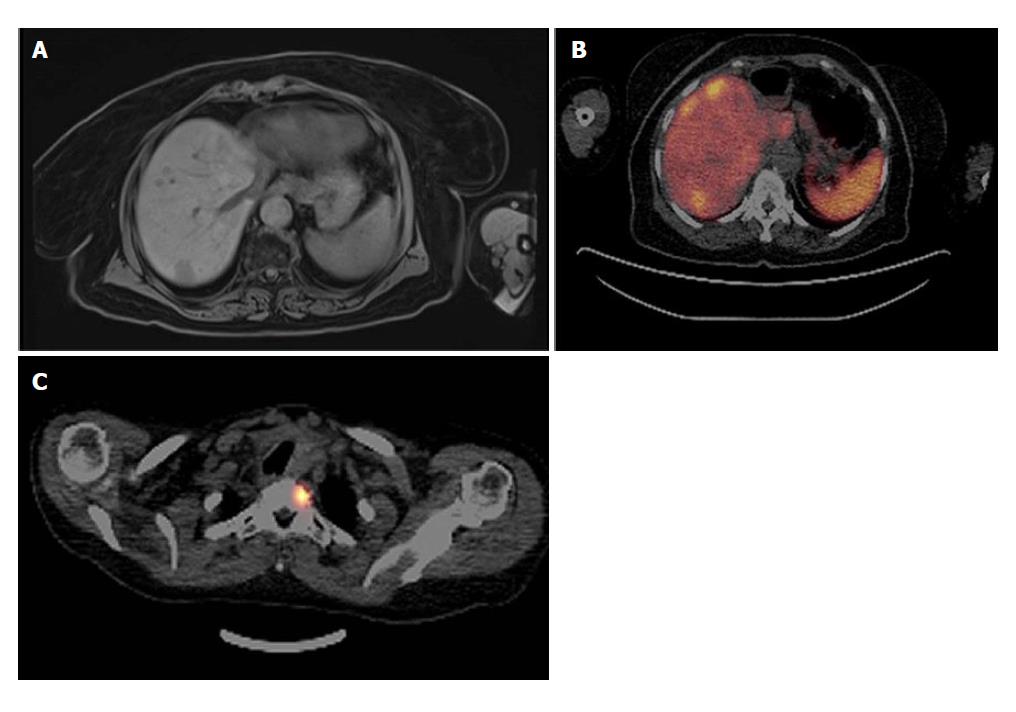Copyright
©The Author(s) 2018.
World J Gastroenterol. May 28, 2018; 24(20): 2152-2162
Published online May 28, 2018. doi: 10.3748/wjg.v24.i20.2152
Published online May 28, 2018. doi: 10.3748/wjg.v24.i20.2152
Figure 1 Multimodality imaging in a patient with neuroendocrine liver metastases considered for transplantation.
A: Magnetic resonance imaging of the liver in a patient with hepatic metastases from a small bowel neuroendocrine tumour. This patient underwent resection of the primary tumour, and then a left hepatectomy. Following post-hepatectomy lanreotide, peptide receptor radiotherapy and also selective internal radiotherapy for recurrent hepatic metastases, this patient was considered for orthotopic liver transplantation. There was no extra-hepatic disease on conventional cross-sectional imaging. B: 68Ga-DOTATATE PET/CT in the same patient. Multiple foci of increased avidity are demonstrated within the liver that were not appreciated on magnetic resonance imaging. C: Radiotracer uptake corresponding to one of multiple bone metastases. According to standard criteria, these would exclude this patient from orthotopic liver transplantation.
- Citation: Clift AK, Frilling A. Liver transplantation and multivisceral transplantation in the management of patients with advanced neuroendocrine tumours. World J Gastroenterol 2018; 24(20): 2152-2162
- URL: https://www.wjgnet.com/1007-9327/full/v24/i20/2152.htm
- DOI: https://dx.doi.org/10.3748/wjg.v24.i20.2152









